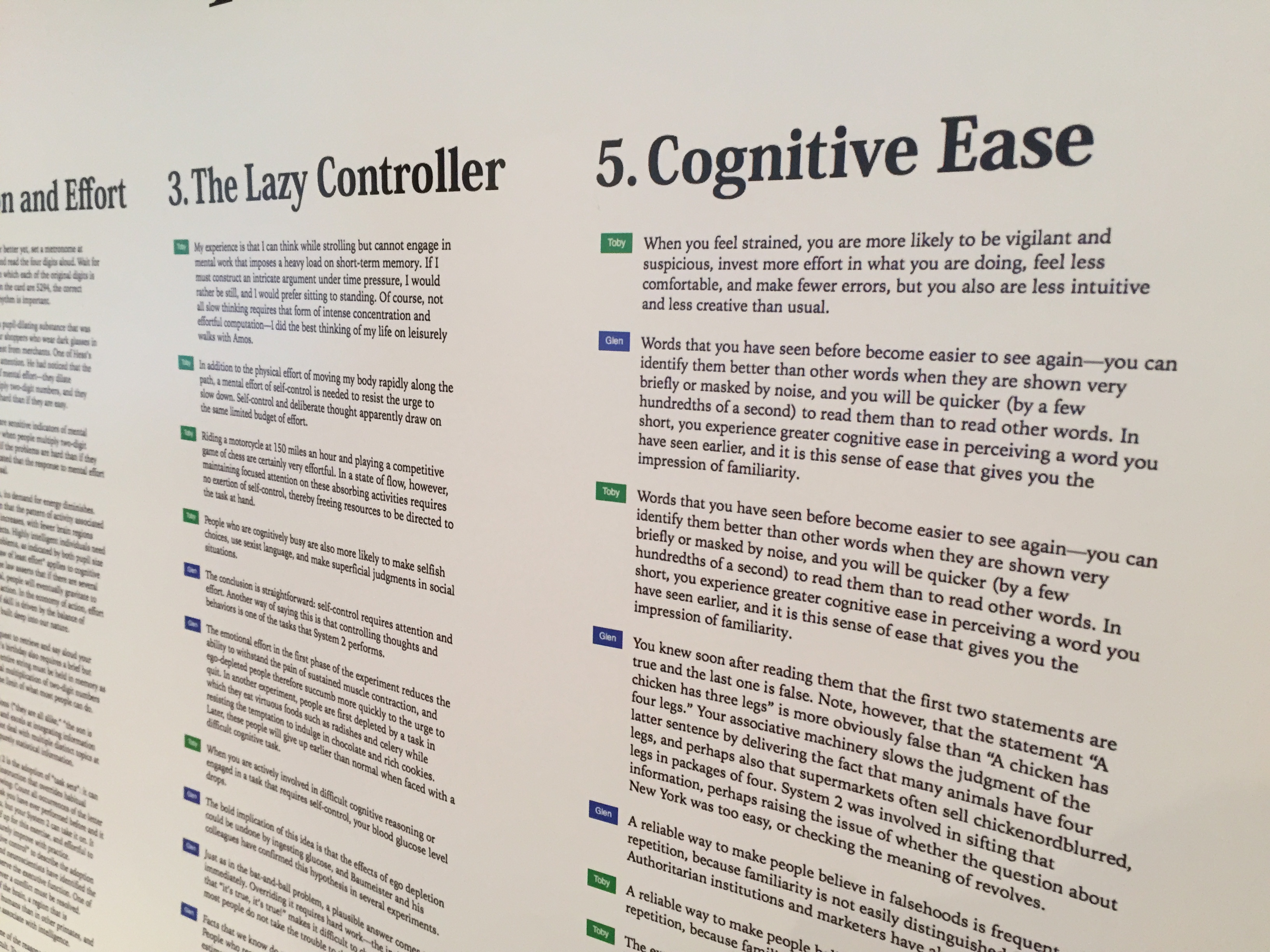I made two things for our book club meeting of Thinking, Fast and Slow. One is a poster of highlights Toby and I took while reading the book:

I'm in blue and Toby is in green:

I was hoping to have highlights for more than just two people, but that's the only data I had access to. I was also hoping book group members would take a look through the annotations before the discussion so that a) they would be grounded in what the book what was saying before the discussion and b) they could get a sense of what was interesting to other members of the group. For example, I might like to see what caught Toby's interest in the Cognitive Ease chapter, or Nagle's in The Lazy Controller chapter. Partly because of last-minute printing, partly because of the group coming back from lunch, and partly because I didn't ask the group to look at the poster, this didn't happen.
One note about annotations: I didn't add annotations to this poster because Toby didn't make any, and I only made a few. I think I agree with Rob's thinking lately that annotations that are meant to be published--whether to friends or a general audience--are generally better in a group context than notes you took for yourself.
And one thing that's difficult: this book was not designed to be read and discussed in a group, and I felt in this discussion that we were really fighting the format of the book. People had fleeting memories of things they read but couldn't find them or show them to other people. People mentioned that certain studies were refuted, but couldn't bring up the original study or the refutations. It was also such a dense book that it was hard to remember everything it talked about. This experience makes me wonder more what it a book designed for group discussion would look like.
A thing I also wonder: if group members had come prepared with specific things they wanted to bring up (maybe like mini-presentations) would that help the discussion?